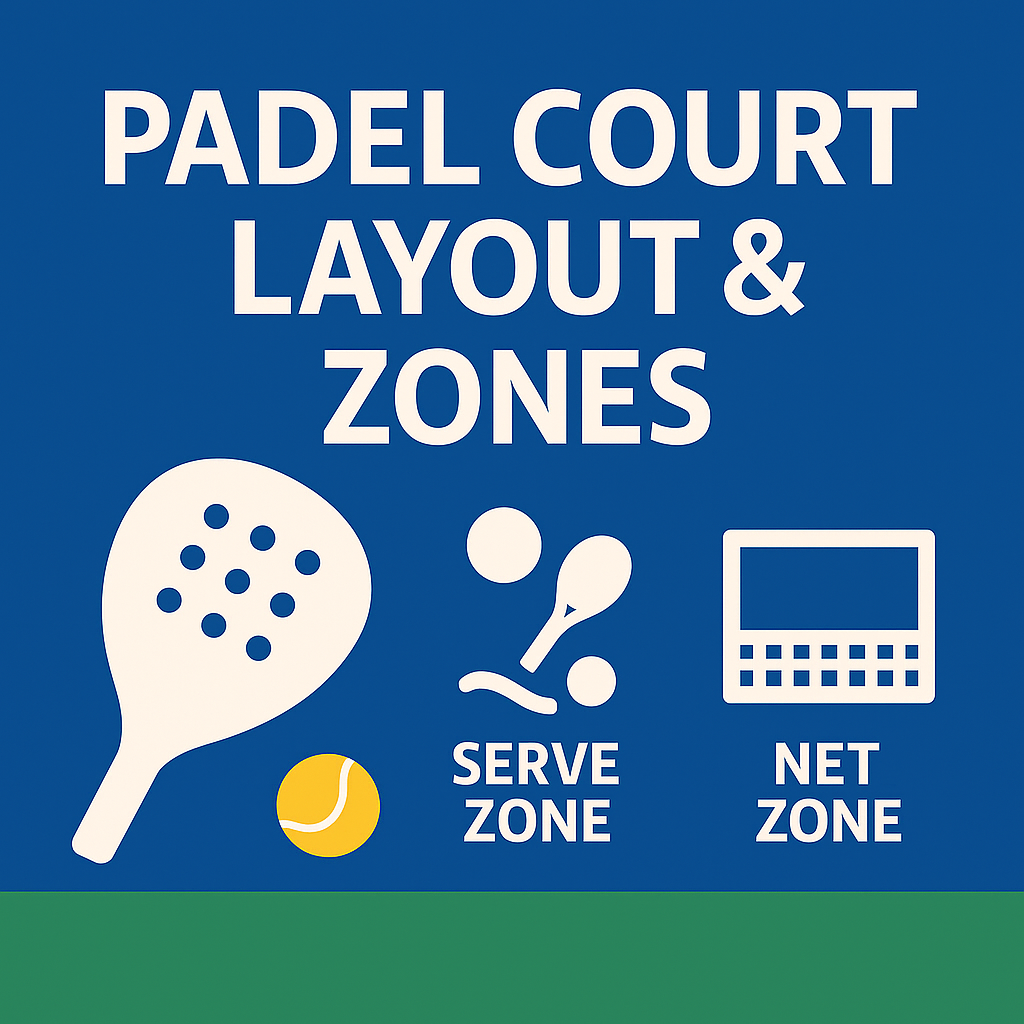
Understanding the padel court is essential for beginners, players developing strategy, and bettors analysing match dynamics. The court’s unique combination of glass walls, metal mesh, narrow angles, and spatial zones creates tactical opportunities not found in any other racket sport.
This guide explains the full padel court layout, all the key zones, their strategic purpose, and how professionals use each area to gain an advantage.
🟦 Court Dimensions
A padel court measures 10 metres by 20 metres, enclosed by walls on all sides.
Key Measurements:
- Length: 20m
- Width: 10m
- Net Height: 88 cm at the centre, 92 cm at the posts
- Back Wall: Glass wall 3m high, with optional extension panels
- Side Walls: Combination of glass and metal mesh
These dimensions create a compact, fast-paced playing environment.
🟩 The Main Sections of the Padel Court
A padel court is divided into several strategic zones.
1. The Net Zone (Offensive Zone)
The area closest to the net is where 80% of points are won.
Key characteristics:
- Best position for volleys
- Enables control of the point
- Creates pressure on opponents
A team that controls the net controls the match.
2. The Backcourt (Defensive Zone)
Located behind the service line.
Players use this zone to:
- Defend smashes and volleys
- Use walls to stabilize the ball
- Set up lobs or counterattacks
This area requires patience, consistency, and strong wall play.
3. The Side Walls Zone
The side walls create natural angles.
Used to:
- Defend cross-court shots
- Play double-wall rebounds
- Hit angled winners
Top players use side walls tactically, especially during fast rallies.
4. The Back Wall Zone
This is one of the most important defensive areas.
Players here rely on:
- Wall rebounds
- Bajadas
- Controlled lobs
The back wall gives players more time and changes the direction of rallies.
5. The Corners (High-Difficulty Zone)
Corners combine walls and mesh.
These areas are:
- The most challenging to defend
- Common targets for strong volleys
- Key for creating breakthroughs
Specialised footwork is required for this zone.
🟨 The Net – Tactical Overview
Controlling the net is the #1 objective in padel.
Advantages:
- Ability to finish points fast
- Cut off lobs early
- Dictate pace and direction
- Apply constant pressure
This is why so many shots (volleys, bandejas, viboras) are designed to either hold or regain net control.
🟧 The Service Boxes
As in tennis, each side has two service boxes.
Important rules:
- Serve must bounce in the correct service box
- Serve must be underarm
- After bouncing, it may hit the glass but not the mesh
Servers aim to force weak returns that allow the serving team to reach the net.
🟫 The Mesh Fence
Metal mesh fencing sits beyond the glass on the side walls.
It creates:
- Fast, unpredictable rebounds
- Tactical opportunities for angled shots
- Defensive challenges when returning balls hit wide
Beginners often struggle with mesh interactions.
🟥 Key Strategic Zones
Understanding zones helps predict match outcomes.
1. Offensive Triangle (Net + Angle Zones)
The strongest attacking position:
- Close to the net
- Slightly toward the centre
- Enables volleys and drop shots
2. Defensive Triangle (Backcourt Corners)
Where players defend using:
- High lobs
- Wall rebounds
- Slow, stable resets
3. Transition Zone (Midcourt)
One of the hardest areas to manage.
Players must decide:
- Move forward to attack
- Move back to defend
Ambiguous positioning causes many errors.
🟦 The Importance of the Glass Walls
The glass is a unique padel feature.
Used to:
- Defend deep shots
- Slow down fast balls
- Change direction of rallies
- Create time to recover
Mastering wall play is essential for competitive padel.
🟩 How Court Zones Affect Playing Styles
Offensive Players:
Dominate the net, rely on volleys and overheads.
Defensive Players:
Stay in the backcourt, extend rallies, use lobs and walls.
Hybrid Players:
Alternate between attack and defence depending on conditions.
Court layout determines the roles of left-side vs right-side players as well.
🟨 How Court Zones Influence Betting
Understanding the court helps bettors analyse:
- Which pair wins more net battles
- Which players struggle in corners
- How weather (wind) impacts backcourt play
- Who controls rallies tactically
Matches won through net dominance often produce:
- Shorter sets
- More 2–0 results
- More under totals
Matches dominated by defensive backcourt play produce:
- Long rallies
- Overs on totals
- Higher chance of 3 sets
🟧 Summary
The padel court is divided into strategic zones that shape every rally:
- Net zone → offensive control
- Backcourt → defensive stability
- Side walls → angles and rebounds
- Corners → high-pressure defence
- Transition zone → decision-making challenges
Understanding the court’s layout is essential for player development, tactical mastery, and smart betting.
Next: Page 5 — Padel Shot Selection for Different Situations.